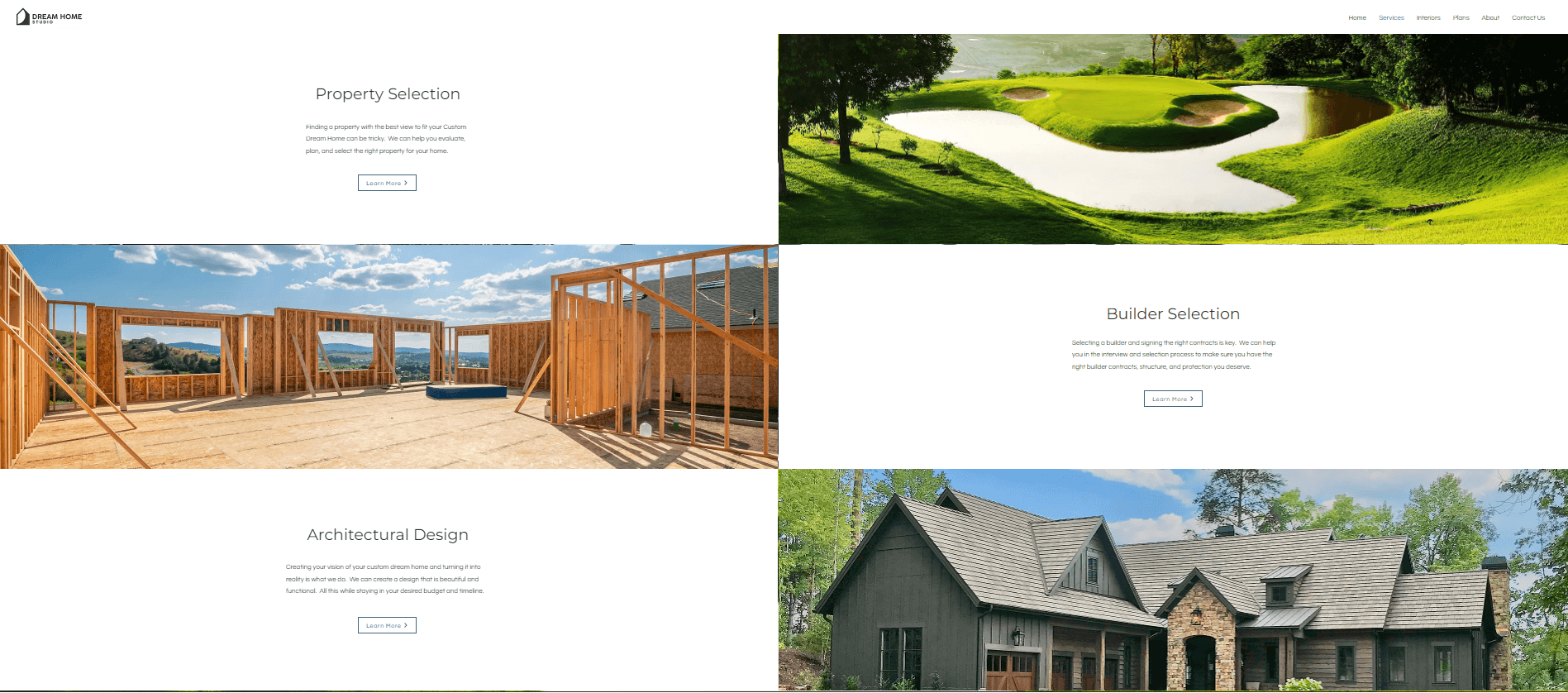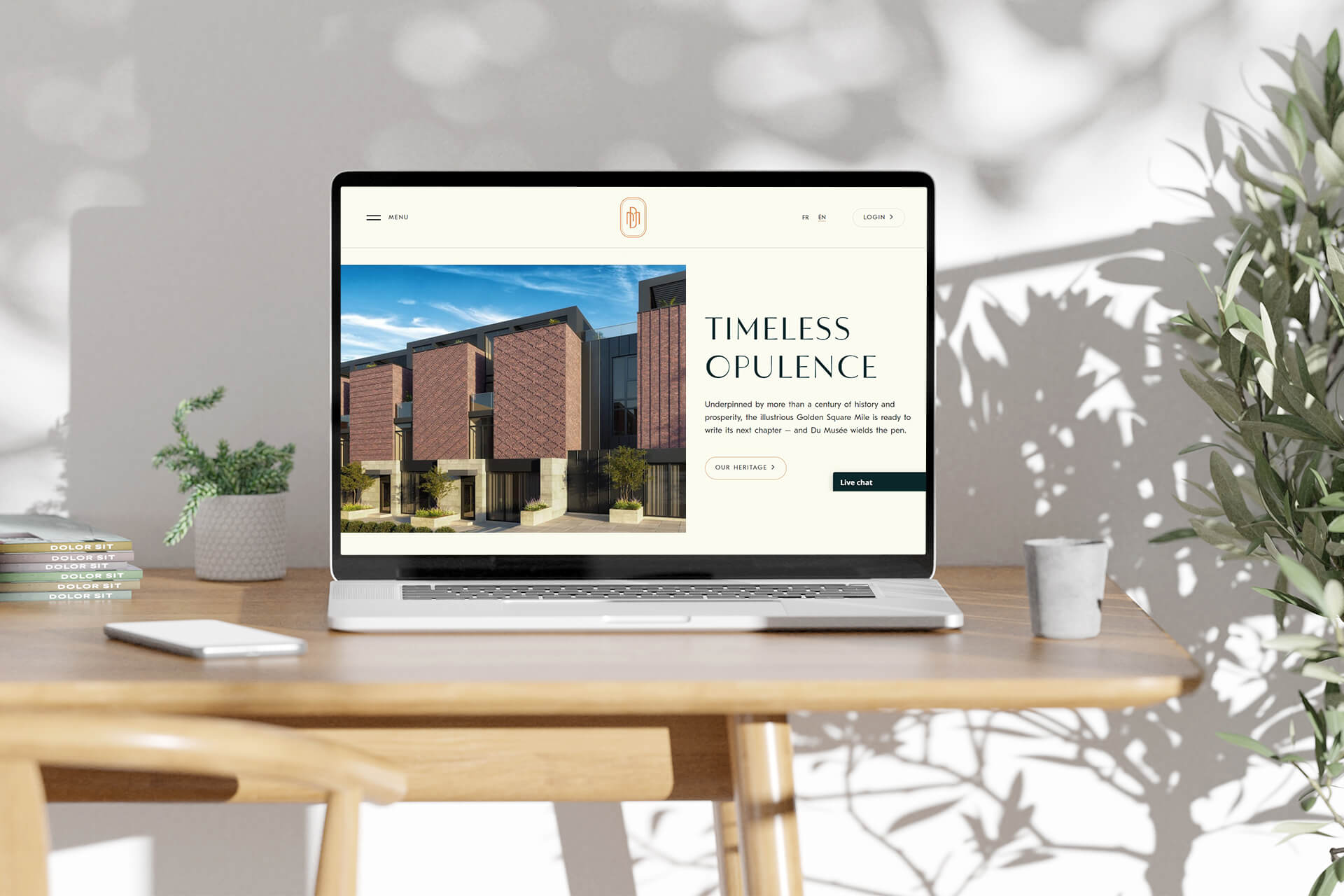Optimizing your website for search engines is essential to attract new traffic and clients. This is true for experts in any business, and architects are no exception. Fortunately, we’re long past the times of stuffing keywords while compromising on the text quality. Now, content must be human-oriented in the first place. So, the primary advice to improve SEO for architects is to always keep your clients at the forefront of your mind when making content. You should know very well who they are, what are their pain points, and what value your page can offer to them. If your website is interesting for real people, search engines will rate it higher too.
Our architecture rendering studio always strives to bring additional value to users who visit our website, which helps us turn them into our clients. And we decided to share the best practices with you. So, what tips should you keep in mind to make your site appealing for both people and algorithms? Let’s get into it!
#1. Choose Keywords Wisely

First and foremost, it’s essential to accurately select the keywords under which you want to be discovered. From the very beginning, it’s crucial to clearly define the services your company provides and to choose keys directly related to this topic. For example, if you provide residential architectural services in California, that’s what your SEO keywords should indicate.
However, even if you’re very clear on what you are doing and what you want to communicate, avoid making up the keys on your own. Instead, conduct thorough research to gather both long-tail (more niche and specific) and short-tail (more broad and common) relevant keys, as well as high-frequency and low-frequency ones.
A common mistake to avoid when working on SEO for architects is discarding long-tail keywords due to their lower frequency. In many cases, they will drive more traffic to your page. This is because they are less competitive and have a more specific search intent. Thus, users who are more focused on a topic they are researching are more likely to use these types of queries. For you, it means that it’s easier to fulfill their requests with your SEO content.
The main challenge of using long-tail keys lies in that they are often harder to find and incorporate naturally into the text. For instance, a short-tail key “architectural services” is easy to use but it can be related to multiple kinds of companies, services, and even dictionary definitions. So, it’s quite unclear what the person who types this key in their search bar is actually looking for. On the other hand, the “how to get professional architectural services” keyword indicates a clear intent for advice. Here, you know exactly what the user is looking for, and can provide it.
Pro tip: when selecting the primary keys for any webpage, include them in the meta tags as well.
Tools to use:
- Free: Google Keyword Planner, Google Search Console, and Keyword Generator by Ahrefs.
- Paid: MOZ and Serpstat.
#2. Diversify Landing Pages

source: Dreamhomestudio
To boost SEO for architects, it is highly preferable to create separate landing pages for each type of service you provide. For example, you can have a landing for residential architecture, commercial architecture, and so on. That’s important because you won’t be able to engage enough traffic if you have only one main page that users are supposed to scroll to find the list of your services.
So, from the SEO viewpoint, it’s definitely worth having different pages targeted at different audiences. However, you need to ensure that each page brings genuine additional value and answers the search intent of users.
Pro tip: each landing page must be optimized for a specific keyword (you should fill in the meta tags, URLs, and so on).
#3. Maintain a Blog

A blog with well-written articles is a great asset to expand and enhance your site’s metrics. More than that, it allows you to engage potential clients at the early stages of your sales funnel. Certain articles can even prompt them to immediately reach out for your services.
You can draw inspiration for blog topics from your clients’ pain points and frequently asked questions. Also, you should conduct competitor analysis, as well as find out what resources your clients or potential clients read. The next step is to explore keywords directly related to your field of expertise and build up the article topics based on all that.
When using the blog to boost SEO for architects, keep these two points in mind:
- As we’ve already mentioned, don’t just wing it with the keywords. Take your time to conduct proper research beforehand.
- Content keys should be focused on your services and related subjects. The same applies to the themes of your articles. For instance, if you work solely on designing commercial spaces, there’s no need to write about residential properties. Otherwise, Google’s perception of your expertise will become vague, and the traffic generated won’t convert into actual clients.
If you have to choose between generating much general traffic and attracting a more targeted yet smaller audience, definitely go for the latter.
Pro tip: update and optimize your old posts from time to time (once a year is more than enough). Regularly updated content is ranked higher by Google.
#4. Use High-Quality Visuals

When building or optimizing a website, having high-quality visuals is a must for architects. Visuals prove your expertise, engage users and make them spend more time on your webpage (for example, when browsing through your portfolio). From the SEO standpoint, all this leads to your site ranking higher.
To impress prospective clients, images and videos on your site must be of high quality. Along with photography and videos, you can use different types of 3D visualization. It will ensure you always have a steady flow of eye-catching visuals.
However, in terms of SEO, uploading fancy images is only the first step. It’s essential to accompany them with well-crafted texts and fill in meta tags (using keywords that you’d like them to be associated with). Remember not to overlook URLs, descriptions, and image alt texts. If everything’s done right, your images will also rank higher in Google’s image search results. This gives you a chance to capture the interest of potential clients there as well.
#5. Increase Your Website Speed

Google pays significant attention to how quickly a site loads. The search engine consistently updates its metrics to measure this. So, it’s best to emphasize this aspect to your web development team. Here are some tips on increasing speed to keep in mind:
- Since architects’ sites often contain a lot of visuals, those should be optimized in formats that have a smaller file size while maintaining the quality.
- Take care to avoid long redirect sequences.
- Use HTTP caching.
- Refrain from overloading your site with numerous plugins. Whenever possible, perform tasks manually.
#6. Ensure Your Website Is Adaptable

Nowadays, increasingly more users access the internet through mobile devices. So, to boost SEO for architects, you need to make sure your site adapts seamlessly to various formats (smartphones and tablets). Clients are unlikely to remain on a site that is not user-friendly, regardless of how valuable its content may be. Therefore, ensuring your website is fully responsive and mobile-friendly is essential to retain and engage visitors. This will significantly boost your architects’ page performance.
#7. Use External Links

When it comes to SEO optimization, working with external links is crucial. The distribution of authority between websites through do-follow links significantly influences a site’s position in the search results.
However, it’s important to prioritize quality over quantity. It’s better to make an effort and get published on a reputable platform for architects such as Architizer, ArchDaily, or other credible hubs rather than purchase twenty links at mediocre sites for the same price. The links to your webpage should be contextually relevant and come from sources that inspire trust — both in you and your potential clients.
#8. Engage Experts

This aspect highlights the SEO significance of cooperating with authors who write not only for your blog but also have publications elsewhere. They might be professional content creators with a solid social media presence. Or they might be experts in their fields — talented architects, designers, engineers, coaches, and so on. By featuring texts from such contributors, your website gains credibility as a platform that hosts content from reputable specialists, establishing itself as a trustworthy source.
#9. Track SEO Metrics

For this purpose, you can utilize Google Search Console and Google Analytics. Choose an assessment frequency for various site metrics: positions, views, clicks, user count, site speed, and more. By doing so, you’ll be able to track your progress, identify any regressions, and promptly address underlying issues.
Select several keywords that hold the most importance for you and track metrics associated with them with particular attention. This approach will allow you to closely monitor the performance of those specific keys that are crucial for your online presence as architects.
#10. Don’t Neglect PR

source: christiesrealestate article featuring ArchiCGI works
No list of tips on SEO for architects will be full without this one. The thing is, there’s a noticeable correlation between the frequency of people searching for a specific company’s website and its search engine rankings. Branded search queries (those containing the company or architects’ names) demonstrate user interest in some brand specifically. As a result, it’s not uncommon to find out that a less SEO-optimized website ranks higher than a well-optimized one just because users often search for that particular brand or architect.
Therefore, it’s crucial to be attuned to your clients, to publish expert articles on external platforms, and to generate interest in your company through different types of public communications. While it might not seem directly related to SEO optimization, it actually is and can help a lot.
Want to learn how much your project costs? See how we evaluate 3D rendering projects
Working on SEO for architects is a powerful way to boost your online presence. However, keep in mind that it’s only a part of a holistic marketing strategy. It has to take into account various aspects such as social media promotion, participating in specialized contests for architects, and so on. By combining different approaches and tactics, with SEO being one of them, you’ll stay on top of your game.
Looking for architecture rendering services to make sure you always have enough high-quality visuals for your marketing efforts? Drop us a word and get stellar 3D imagery, animations, and other engaging content for your website!

Adele Hauter
Digital Marketing Expert
Adele's expertise in the digital marketing field is unmatched. She stays up-to-date with the latest trends and strategies, incorporating them into ArchiCGI's campaigns with skillful precision. When Adele is not working on marketing projects, she enjoys creating concept art and tattooing.


